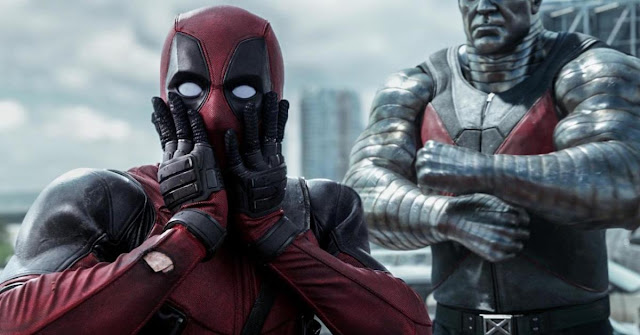Non-linear storytelling in Deadpool - Film Review
Non-linear story telling is another key device used by Postmodernist films. Deadpool uses this technique perfectly to capture Deadpool’s personality as a character and make his origin story much more interesting. It is perfectly entwined through the scrip to create an amusing and upbeat film.
The first, and immediately most obvious to audience, device used is fourth wall breaks. These are direct comments or interactions with the audience. The use of fourth wall breaks begins right from the beginning of the credits, labelling each of the production team with different funny names other than their role names.
He also regularly turns to the camera and tells the audience exactly what he’s feeling. This openness helps us connect with the character, makes us slightly disgusted at times and ultimately leads to some amazing comedic moments. This gives us an idea of the character of the film and Deadpool himself before the movie starts.
The film also begins in the middle of the second act. This means that it is inheritantly non-linear. It is a clever use of a device to make what would ultimately be a fairly unengaging opening if it were to start at the beginning of the story. In the origin story, the first act is Wade falling in love, getting diagnosed with cancer and being transformed by Francis. This would be a slow moving and rather depressing opening to the film. However, starting later in his story and then using Analepsis gives the audience a number of questions they are wondering the answers to, which then get answered gradually throughout the flashback. Also by stopping half way through one of Deadpool’s trademark bloody, comedic fights, you leave the audience wanting to know what the resolution to the fight is and where the character will go from there. Ultimately this is far better than the linear alternative.
Deadpool is really a film that would not work or be nearly as effective in a linear form. A large amount of its comedy and charm comes from the way it presents to us, not the content of the story.
The first, and immediately most obvious to audience, device used is fourth wall breaks. These are direct comments or interactions with the audience. The use of fourth wall breaks begins right from the beginning of the credits, labelling each of the production team with different funny names other than their role names.
The film also begins in the middle of the second act. This means that it is inheritantly non-linear. It is a clever use of a device to make what would ultimately be a fairly unengaging opening if it were to start at the beginning of the story. In the origin story, the first act is Wade falling in love, getting diagnosed with cancer and being transformed by Francis. This would be a slow moving and rather depressing opening to the film. However, starting later in his story and then using Analepsis gives the audience a number of questions they are wondering the answers to, which then get answered gradually throughout the flashback. Also by stopping half way through one of Deadpool’s trademark bloody, comedic fights, you leave the audience wanting to know what the resolution to the fight is and where the character will go from there. Ultimately this is far better than the linear alternative.
Deadpool is really a film that would not work or be nearly as effective in a linear form. A large amount of its comedy and charm comes from the way it presents to us, not the content of the story.





Comments
Post a Comment